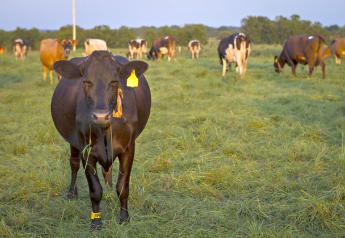We Need a National Strategy for CWD

Since Chronic Wasting Disease (CWD) first emerged in captive deer in Colorado in the 1960s, the prion disease has spread to at least 26 states, three Canadian provinces and several countries in Europe. While the fatal disease continues to spread, fears that it could cross species barriers to affect livestock or humans have, so far, not come to fruition.
Control measures for CWD have mostly evolved on a state-by-state basis, with the exception of some broader controls over movement of captive cervids. The patchwork of state policies and control measures is understandable, with a lack of consensus or scientific evidence to support their efficacy. Various states have experimented with culling, larger quotas for recreational hunters, restrictions on transport of carcasses or venison and tighter biosecurity regulations in the captive cervid industry. States generally have tried to balance the economic contributions of recreational hunting and deer farming with population control and other strategies.
Now though, it is time for a national strategy for the long-term health of wild and captive cervids, reduced risk of disease in livestock, and ultimately, to protect public health.
Recently, a team of experts in public health, wildlife diseases, prion research and laboratory diagnosis developed a report calling for a comprehensive national strategy to address the risks associated with CWD.
The multi-discipline team included representatives from the Center for Infectious Disease Research and Policy (CIDRAP) at the University of Minnesota, the Prion Research Center at Colorado State University; the National Prion Disease Pathology Surveillance Center at Case Western Reserve University; and the Minnesota Department of Health.
Their report was recently published in the journal mBio by the American Society for Microbiology.
Their recommendations include:
Invest in CWD research
We need research into continued improvements in diagnostic testing for lower costs, faster results and reduced risk of cross-contamination in processing plants. The authors also note that research investment can help answer questions regarding disease pathways and mechanisms, including risk of transmission between cervids and the potential threat to humans. In natural settings, CWD has not been found in animals other than deer, elk and other cervids, but laboratory tests suggest that evolving strains of the causative prions could cross species barriers and affect other animals, including primates. Finally, research is needed on development of effective vaccines or treatments to protect cervids and potentially decrease CWD spread.
Enhance mandatory CWD cervid testing
Requirements for CWD testing in hunter-killed cervids vary widely between states and zones within states. In many cases, testing is voluntary and statistics suggest a significant number of CWD-positive animals are butchered for human consumption. The authors argue that mandatory testing of killed or dead cervids in all areas of endemicity and establishing associated monitoring systems that can be shared across states would provide more accurate data for wildlife managers and public policy makers, and also reduce human consumption of meat from CWD-positive animals.
Improve cervid management
Without comprehensive, effective changes in wildlife management and the captive cervid industry, the nearly $40 billion annual contribution of wild cervid hunting in the United States is under threat, the authors say. They note that the Association of Fish and Wildlife Agencies (AFWA) has published the best CWD management practices based on current science. The document addresses movement of live cervids, carcass disposal, and feeding/baiting, and the authors say states should implement the recommendations as soon as possible, backed by sufficient resources. “Science-based and enforced regulation of captive cervid facilities is essential to prevent transmission of CWD within such herds and subsequently reduce risk of transmission to wildlife populations,” they say.
The group concludes that available data indicate the incidence of CWD in cervids is increasing and the potential exists for transmission to humans and subsequent human disease. Research to better understand potential risk to humans, along with better public-health measures to prevent human exposure could reduce the likelihood of human cases.
Read the full report from mBio.
For more on CWD and prion research, see these articles from BovineVetOnline:
Chronic Wasting Disease: Don’t Panic, but Remain Vigilant
Wisconsin Researchers Find CWD in Soil Around Mineral Licks
APHIS Finalizes CWD Herd Certification Program Standards







